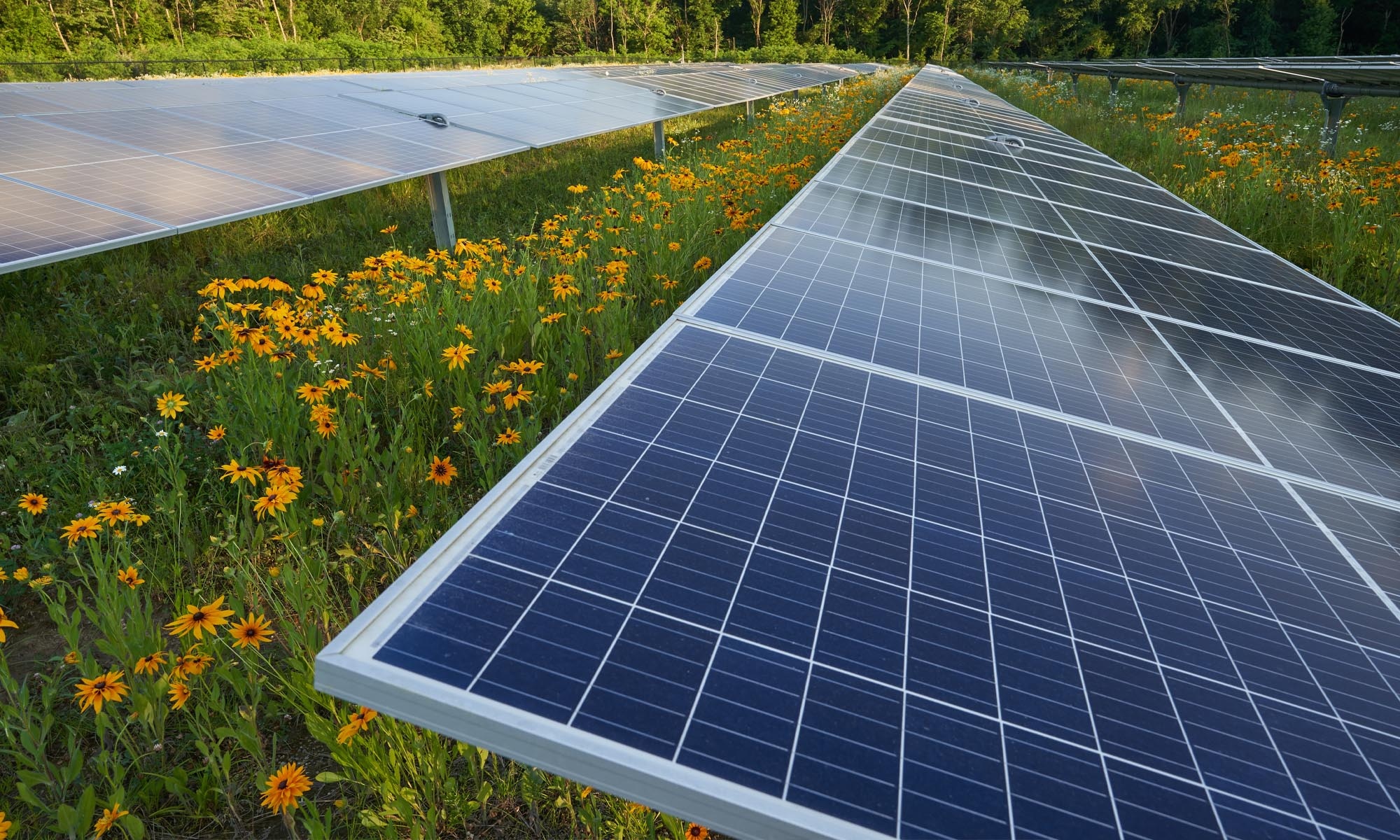Increasing energy costs are a potential budget-buster. Some sources project energy costs in Ohio rising 10-15% for residents and as much as 29% for businesses in 2025. Denison is implementing approaches to keep tuition costs in check by “future-proofing” these expenditures — while putting a lid on greenhouse gas emissions.
“It’s a win-win for the college,” says Jeremy King, director of sustainability and campus improvement. “Increasing our on-campus solar power will help us contain our electricity costs and get us much closer to meeting our net-zero carbon goal.”
Building strength in solar
Currently, 10% of Denison’s electricity is sourced through solar panels. Utilities provide the remaining 90% from coal, natural gas, and a mix of renewable energy sources, rendering the college vulnerable to fluctuating energy costs and adding to its carbon footprint.
Seeking to both control costs and meet its commitment to net zero carbon emissions by 2045, the college hired Ever-Green Energy, a consultant in the sector. After a months-long analysis of campus energy usage and greenhouse gas emissions, Ever-Green Energy provided a review of possible solutions and options.
This year Denison is poised to install an additional 5.4 MW (20 acres) of solar arrays on vacant land behind the Homestead. When combined with already existing arrays, solar power will provide nearly 50% of the college’s electricity and reduce its energy-related emissions by 23%.
Denison relies on various solar panel installations across campus. Many are on rooftops, and an array situated behind the recycling center is accessible for educational use. Larger arrays can be challenging to install. The bigger the installation, the more maintenance questions to answer. An especially vexing one: How do you keep surrounding vegetation below the height of the panels?
Denison has been an innovator in solving these issues. The college was the first in Ohio — and in a five-state area — to create a pollinator habitat around a large solar array sited in the Biological Reserve. The habitat is mown just once a year for maintenance. It has become a blueprint for low-maintenance and sustainable solar installations.
King has a new idea for the array behind the Homestead. He’s in discussions with a local sheep farmer to explore using the grazing ovines to maintain the landscape. King says it’s another potential win-win for the college.
“We save our facility crews from a big headache and keep our emissions in check. The sheep will keep the grass down without harming the infrastructure, and the farmer feeds his animals,” he says. “The panels are even tall enough to provide shelter.”
Energy data improves efficiency
Solar power is only one tool to reduce energy costs in Denison’s workshop. In 2011, the college established a green revolving fund, allocating $1 million from its operating budget for projects that increased energy efficiency and water conservation on campus. The money saved by these efficiencies was put back into the fund to make further sustainability improvements.
Since this initial allocation, Denison has invested over $5 million in more than 200 projects across campus, significantly reducing its energy costs and carbon footprint.
Though most significant sources of energy-efficient “low-hanging fruit,” such as lighting upgrades to LEDs, have been harvested, the revolving fund’s effects live on.
The fund helped create a culture around energy efficiency that is now firmly embedded in campus operations. All new buildings, renovations, and ongoing facilities updates are evaluated through an energy efficiency lens.
One example: energy and water monitors have been collecting data on campus buildings for more than a decade, yet the college wasn’t able to fully take advantage of this resource until 2023 when James Gallick was onboarded as Denison’s new senior automation engineer.
With a background in mechanical engineering and an MBA, Gallick develops, designs, and configures campus energy systems to operate at their highest efficiency. His efforts save money while lowering greenhouse gas emissions. “It’s important to do both,” says King. “We help our students afford Denison’s life-changing education today while working to improve tomorrow’s environment.”
Building on a legacy of green energy
In the early 1980s, a couple of small solar arrays were added to the Denison Homestead to pump drinking water and power lights and a refrigerator for the students living there.
In 2007, a 6.44kW array was installed on the roof of Doane Library — one of the first to be installed at a college in Ohio.
In 2014, a 7.84kW solar array was added to the roof of the Polly Anderson Field Station at the Biological Reserve that powers the facility.
In 2017, a 2.3 MW solar array in the Bio Reserve was installed — our largest to date. The 6,750 panels provide about 10% of campus electrical needs.
In 2025, a 5.4 MW solar array will be added northwest of campus. All in, solar power will provide nearly 50% of Denison’s electricity.






